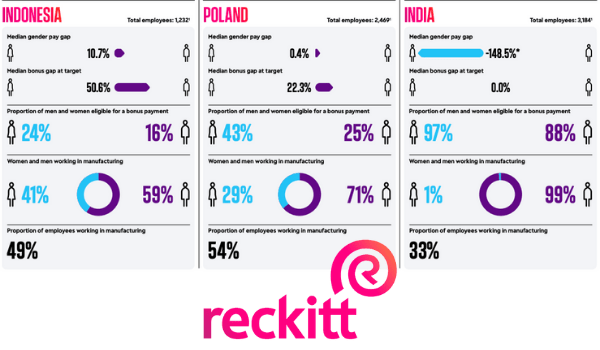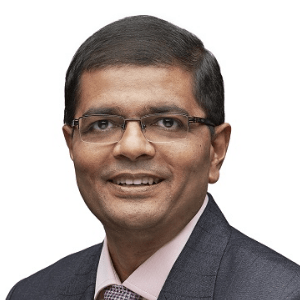Reckitt Benckiser (RB) continues to achieve gender pay gap in India region. From -56 in the last report issued by the Company, it has moved to -167.8. It is to be noted here that the negative number represents a gender pay or bonus gap inclining towards women. In India, 97 per cent men and 88 per cent women are eligible for bonus payment.
The RB Gender Pay Report 2020 built on the last year’s report, has added five more countries to the list apart from China, India, Mexico, the UK and the US, that are usually featured. The new countries are Brazil, Indonesia, Poland, Russia and Thailand. These 10 countries constitute 70 per cent of RB’s global workforce.
“We are aiming for an internal colleague profile that mirrors the consumers we serve. However, a gender pay gap analysis is just one snapshot, the results of which are largely driven by employee demographics”
Ranjay Radhakrishnan, CHRO, RB
Ranjay Radhakrishnan, CHRO, RB, says, “We are aiming for an internal colleague profile that mirrors the consumers we serve. However, a gender pay gap analysis is just one snapshot, the results of which are largely driven by employee demographics. Our overall aspiration is for a more diverse workforce, including a greater gender representation amongst senior leadership positions.”
Thailand ranks the worst with 30.2 per cent mean gender gap and 56.8 per cent mean bonus gap. China has improved from the last report, where its mean gender gap was at 13.2 per cent. This time, it has come down to 11 per cent.
“We’re focusing on six pillars that drive our Inclusion agenda. Three of them can be grouped under ‘who we are’, and they relate to our people, our policies, and what we want leadership to look like in terms of inclusion. Then a second group of three relates to ‘what we do’ and how we can leverage our brands, procurement and external partnerships to drive Inclusion.”
Carrie Adams, Global Head of Inclusion, RB
Inclusion
In 2020, RB launched an inclusion strategy, creating a dedicated board of Reckitt business leaders, chaired by the CEO, to drive it. The organisation also partnered with experts at EY to appraise what they do well in this area and where they can improve.
“We’re focusing on six pillars that drive our Inclusion agenda. Three of them can be grouped under ‘who we are’, and they relate to our people, our policies, and what we want leadership to look like in terms of inclusion. Then a second group of three relates to ‘what we do’ and how we can leverage our brands, procurement and external partnerships to drive Inclusion. Although the six are global pillars, we are also establishing local inclusion boards, to be able to act on what matters most to our local markets,” says Carrie Adams, global head of inclusion, RB.
“We’d noticed that we were losing many of our women colleagues, often after five to seven years, because they were struggling to balance career and home lives. DARE led to many innovations, such as mentoring, lean-in support circles and the accelerate structured leadership development programmes, to name a few”
Sara Holton, group head – talent & leadership development, RB
The results of the additional five countries confirm the trends that began to be witnessed last year – they’re largely driven by two factors. “First is the proportion of men and women we employ in manufacturing in these ten different markets. Second is the balance of men and women in senior management roles across the business in the markets. This highlights the importance of employee demographics rather than a focus on the average pay gap,” explains Salma Alloub, total rewards manager, RB.
The 10 countries fall broadly into two categories at RB. The first includes countries, such as Russia, China and Thailand, where, Alloub reveals that one finds a roughly equal or higher proportion of women manufacturing workers, and also a high proportion of men in senior – and therefore higher paid – management positions. This usually results in the average gender pay measures skewing towards men across the board. The second category of countries has significantly more men than women in manufacturing sites, and again, a higher proportion of men in senior-management roles.
These are countries, such as the UK, the US and Poland. The impact of the manufacturing demographic will push some measures in favour of women. This is particularly the case when one looks at the ‘median’ – the comparison of the people who lie in the middle between the lowest and highest earners.
Develop, attract, retain, engage
To support women’s involvement in the workforce, RB had introduced DARE in 2015, to develop, attract, retain and engage talented women.
Sara Holton, group head – talent & leadership development, says, “We’d noticed that we were losing many of them, often after five to seven years, because they were struggling to balance career and home lives. DARE led to many innovations, such as mentoring, lean-in support circles and the accelerate structured leadership development programmes, to name a few.”
The new inclusion strategy will empower local markets to form their own Women@Reckitt groups. This will deliver effective and locally-designed support and give leaders better visibility of what’s needed.




